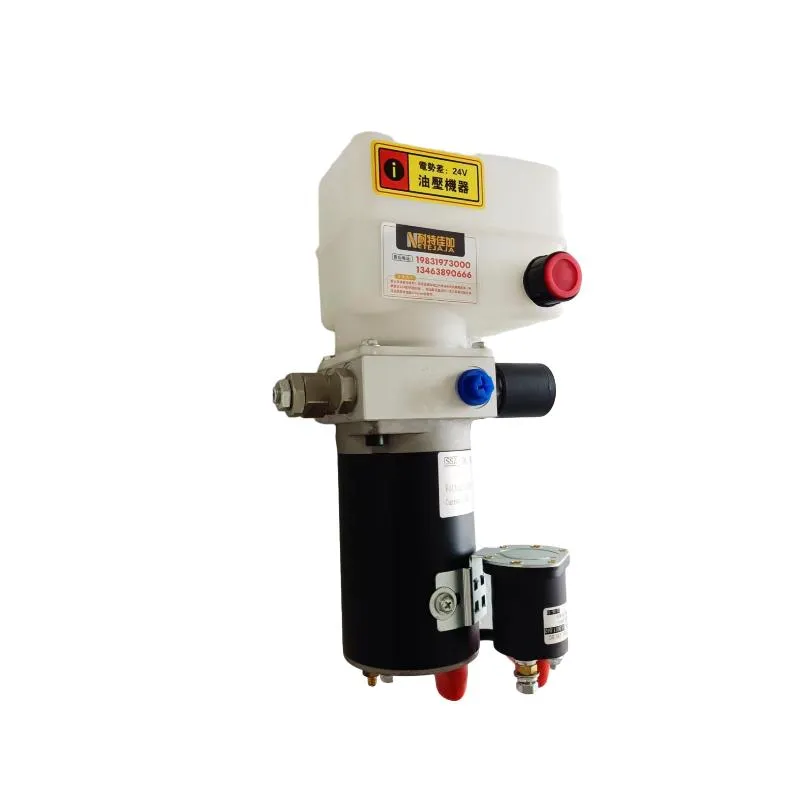Dec . 16, 2024 09:16 Back to list
Efficient Single Acting Power Unit for Enhanced Performance and Reliability in Various Applications
High-Quality Single Acting Power Unit An Overview
In the realm of hydraulic systems, the single acting power unit stands as a robust solution for a variety of industrial applications. Characterized by its simplicity and efficiency, this type of power unit plays a crucial role in generating mechanical power from hydraulic energy. As industries increasingly seek to enhance performance while minimizing costs, the demand for high-quality single acting power units has surged, making them essential components in contemporary manufacturing and automation environments.
What is a Single Acting Power Unit?
A single acting power unit operates on the principle of hydraulic power transmission using a single-acting cylinder. In this configuration, hydraulic fluid is directed to one side of the piston, allowing it to move in one direction. The return of the piston is typically achieved through a mechanical means, such as a spring or the force of gravity. This design significantly simplifies the construction and operation of the unit, making it cost-effective and easier to maintain compared to its double-acting counterparts where hydraulic pressure is required for both the forward and return strokes.
Key Advantages of Single Acting Power Units
1. Simplicity and Reliability The fundamental design of a single acting power unit reduces the number of moving parts, leading to enhanced reliability. This simplicity not only means fewer potential points of failure but also less complicated maintenance procedures, which can result in reduced downtime in industrial operations.
2. Cost-Effectiveness Single acting units tend to be more affordable than double acting systems. The reduction in material costs and manufacturing complexity directly translates into lower purchase prices for customers, making them an attractive option for businesses operating on tighter budgets.
3. Versatility These power units are ideal for a wide array of applications, including lifting, pressing, clamping, and shaping materials. Their ability to deliver significant force in one direction makes them suitable for tasks such as vehicle hoisting or machinery operation in various sectors, including manufacturing, construction, and automotive industries.
4. Efficiency With a straightforward operational design, single acting power units can deliver powerful outputs with minimal hydraulic fluid requirements. This efficiency not only conserves energy but also reduces the operational costs associated with hydraulic fluid supply and maintenance.
high quality single acting power unit

Applications of Single Acting Power Units
Single acting power units are extensively utilized in numerous applications across different industries. Some of the common uses include
- Hydraulic Presses These units are often a critical component in hydraulic press operations where precise and powerful movement is necessary.
- Automotive Lifts In automotive service environments, single acting units allow for effective vehicle lifting and holding, facilitating repairs and maintenance tasks.
- Material Handling Many automated systems employ these power units to lift or lower materials efficiently, thereby enhancing productivity and safety in warehouses and production lines.
- Construction Equipment Equipment such as concrete vibrators and compaction devices frequently use single acting power units due to their reliable performance and power output.
Conclusion
The high-quality single acting power unit is an indispensable tool in modern industry, delivering reliability, efficiency, and cost-effectiveness. As industries continue to evolve and embrace new technologies, the significance of these power units is poised to grow. For businesses looking to optimize their operations, investing in a high-quality single acting power unit can lead to improved productivity, reduced operational costs, and enhanced mechanical performance. As a result, they remain a popular choice for engineers and industrial operators striving to stay ahead in a competitive marketplace. By selecting the right power unit for specific applications, companies can harness the full potential of hydraulic technology, ensuring that they meet both operational demands and budgetary constraints.
-
Fork Lift Power Units - Hebei Shenghan | Efficiency, Reliability
NewsJul.13,2025
-
1.5-Ton Turbocharged Cylinder-Hebei Shenghan|Hydraulic Solution,Energy Efficiency
NewsJul.13,2025
-
Auto Hoist Power Units-Hebei Shenghan|Efficiency&Industrial Lifting
NewsJul.13,2025
-
Double Acting Power Units-Hebei Shenghan|Hydraulic Solutions,Industrial Efficiency
NewsJul.13,2025
-
1.5 Ton Lifting Cylinder 70/82-40-290-535 - High-Performance Hydraulic Solution | Hebei Shenghan
NewsJul.13,2025
-
Fork Lift Power Units - Hebei Shenghan | Efficiency&Reliability
NewsJul.13,2025
